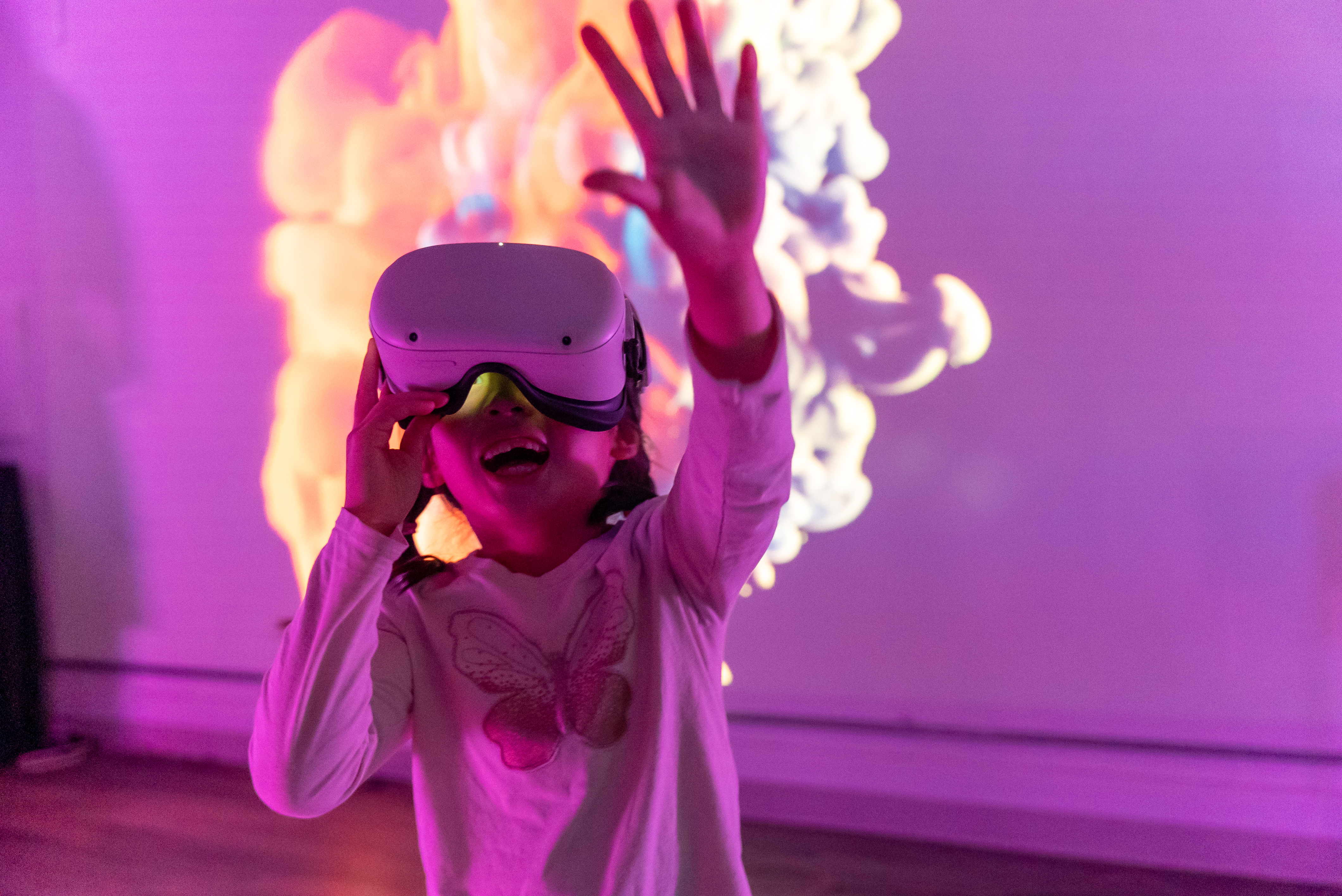As pioneers of the first virtual reality platform in francophone associations, Espace V, in today's article we would like to talk about the benefits of using these type of technologies for art exploration and for learning languages, like French.
Virtual reality has opened up new avenues for us to explore and experience different worlds that would have otherwise been impossible. The use of this technology has extended to the arts and language learning, and it is an excellent tool to explore and learn about new cultures, especially for those interested in French culture.
Virtual reality (VR) is a technology that simulates a three-dimensional environment using a headset and controllers. It allows users to immerse themselves in a digital world, interact with objects and even other users. VR has been used in the entertainment industry, but it has also found use in education, training, and research.
Virtual reality has transformed the way we explore art. With VR technology, we can now visit museums, galleries, and exhibitions from the comfort of our homes. This has made art more accessible to people who may not have the means or time to travel to different locations. For example, the Louvre Museum in Paris has made some of its exhibitions available in virtual reality, allowing visitors to walk through the halls and view the art pieces from different angles.
VR also allows artists to create immersive experiences that would be impossible in the physical world. Artists can create entire worlds for
viewers to explore, where the art pieces are not just static objects on a wall but part of a larger environment.

Virtual reality is also an excellent tool for language learning, especially for those interested in learning French. VR can simulate
real-world scenarios where learners can practice speaking and listening to French in a safe and controlled environment. For example,
learners can use VR to simulate a trip to Paris, where they can interact with native speakers, order food at a restaurant, or ask for
directions.
VR can also be used to simulate language immersion programs, where learners can practice their French in a virtual environment that mimics a real-world situation. This can be especially useful for learners who may not have the opportunity to travel to a French-speaking country.
One of the main benefits of using VR for art exploration and language learning is the ability to immerse oneself in a new culture without the need for physical travel. This is especially useful during times when travel may not be possible or safe.
VR also provides a safe and controlled environment for learners to practice their language skills without the fear of embarrassment or
mistakes. This can help learners build confidence in their language abilities and improve their fluency.
Finally, VR allows for personalized and interactive learning experiences. Learners can explore at their own pace and interact with
objects and people in the virtual environment, making the learning experience more engaging and enjoyable.
Virtual reality is an excellent tool for exploring art and learning languages like French. It provides an immersive and interactive
experience that allows learners to explore new cultures and practice their language skills in a safe and controlled environment. With the
increasing availability of VR technology, we can expect to see more innovative uses of this technology in the arts and education in the
future.
Test our current exhibition, Espace
V underwater online or in person at Alliance Francaise Vancouver!
This website uses cookies to personalize your content (including ads), and allows us to analyze our traffic. By continuing to use our site, you agree to our privacy policies.